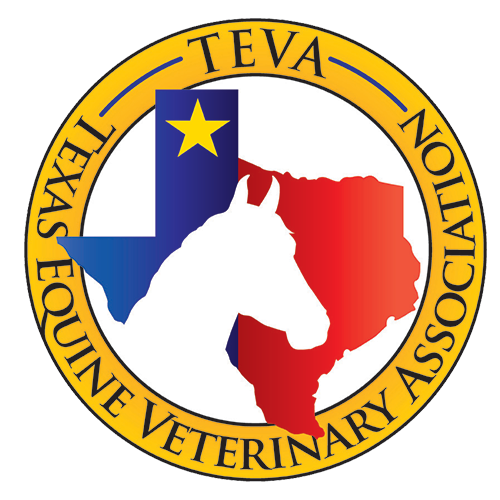To register, you must be logged into your TEVA member account!
Featuring Dr. James Brown, Dr. Keith Chaffin, Dr. Laszlo Hunyadi, Dr. Carolyn Arnold and Dr. Luis Morales
Open to TEVA member veterinarians and students. Limited to 30 attendees.
HOST HOTEL: EMBASSY SUITES by HILTON, AMARILLO DOWNTOWN
Room block available for discounted rates 5/31/23-6/2/23. Hotel cutoff date: 5/19/23
SCHEDULE:
Thursday June 1st
8:00AM – 12:00PM
8:00 - 8:50am: Interpretation of skull radiographs – Dr. James Brown
9:00 – 9:50am: Diagnosis, treatment, and management of common sinus conditions – Dr. James Brown
10:10 – 11:00am: Dynamic endoscopy – Dr. Carolyn Arnold
11:10 – 12:00pm: Update on R. equi pneumonia – Dr. Keith Chaffin
12:00PM – 1:00PM: Lunch Break
1:00PM – 3:00PM: Non-infectious / asthma performance horse – techniques and diagnostics included Dr. Laszlo Hunyadi
Friday June 2nd
8:00AM – 12:00PM: Wet Lab
LECTURES:
Interpretation of Skull Radiographs – Dr. James Brown
This lecture will review dental and sinus anatomy and how it relates to the 2D radiograph. The author along with collaborators from Indiana University have developed 3D models from CT studies and adapted various tools to allow students and veterinarians to relate 3D anatomy to the radiograph. The second half of the lecture will focus on case examples using common pathologies where both radiographs and CT studies are available, and this will allow the audience to test their radiograph interpretation against the gold standard of CT.
Surgical Management of Common Sinus Conditions – Dr. James Brown
This lecture will focus on surgical approaches to common sinus problems in the horse. Advances in diagnostic tools, along with standing sinus surgery have opened more opportunities for clinicians to treat sinus problems. Despite these improvements, sinus cases can become complicated and difficult to resolve in a timely manner. The complex anatomy and our inability to make accurate diagnosis are well-recognized contributing factors for complications. In this lecture, the author will expand on risk factors for sinus surgery complications by sharing results of recent retrospective study of 230 sinus surgery cases.
Dynamic endoscopy – Dr. Carolyn Arnold
This lecture will provide an overview of the indications for dynamic endoscopy, such as what types of cases could benefit from over-the-ground endoscopy. Video recordings of real cases will be shown to provide examples of various conditions diagnosed by dynamic endoscopy. A review of the types of dynamic scopes available for use and tips for performing the exam will be included.
Update on R. equi pneumonia – Dr. Keith Chaffin
This lecture will provide an update on Rhodococcus equi pneumonia in foals. Topics will include on-farm monitoring protocols for endemic farms, treatment strategies and prevention. Complications of treatment and extra-pulmonary complications will be discussed.
Diagnostic challenges in assessing allergic airway disease in horses - Dr. Laszlo Hunyadi
Current diagnostic algorithms for allergic airway disease in the horse are flawed and improved molecular based diagnostics are needed. Equine asthma is currently diagnosed by a combination of clinical signs and broncho-alveolar lavage fluid (BALF) cytology. Concurrent allergic disease can be diagnosed by intradermal skin testing (IDT). 52 adult horses in four locations in Texas were evaluated for asthma, and a subset of 31 horses were evaluated for allergies by IDT. A subgroup of 12 BALF samples were evaluated by two blinded board-certified clinical pathologists. 18/52 horses were normal (non-asthmatic) and 34/52 horses were diagnosed with asthma, and of the horses diagnosed with asthma the majority were mastocytic (44%). There was poor agreement between Clinical Pathologists A and B for the diagnoses of eosinophilic or mastocytic asthma, and good agreement for the diagnosis of neutrophilic asthma when a subgroup of 12 horses were evaluated. No association was found between allergen specific positive IDT results and the diagnosis of asthma or any inflammatory cell-type of asthma. The results of this study demonstrate the failure of current methodologies to diagnose asthma accurately and repeatedly in the equine athlete. Both failures of diagnostic testing in horses demonstrates the need for new molecular based and quantitative tools for the confirmation of an asthma diagnosis in an ambulatory or hospital setting.
Bronchoalveolar lavage fluid analysis in barrel racing horses with exercise-induced pulmonary hemorrhage and asthma in Texas - Dr. Laszlo Hunyadi
Exercise-induced pulmonary hemorrhage (EIPH) and asthma in barrel racing horses is a common disease across the United States. Limited information is available on non-infectious respiratory diseases in this population, the interaction between these two diseases, and the occurrence of both EIPH and asthma in the horse. The purpose of this study was to evaluate the bronchoalveolar lavage (BAL) fluid cytological results of barrel racing horses with EIPH, asthma, or both. A retrospective study was conducted using the medical records of horses that presented with cough and decreased athletic performance and BAL results that met the criteria for inclusion. Data from 95 horses were included from a private practice referral hospital in Texas. No statistical difference was found in the frequency of neutrophilia, eosinophilia, or mastocytosis between diagnoses of EIPH, asthma, or concurrent diagnoses of EIPH and asthma. Bronchoalveolar lavage of horses suspected of EIPH is warranted to fully characterize the noninfectious respiratory disease of barrel racing horses.
WETLAB STATIONS:
Station 1. - Transtracheal Wash (TTW) & Bronchoalveolar Lavage (BAL) (Drs. Keith Chaffin & Laszlo Hunyadi)
Participants will learn how to perform endoscopic and blind TTW & BAL to yield sufficient cells for accurate diagnostic cytology in the live horse. Emphasis on technique, sedation, head position, cough suppression saline administration will be discussed to maximize yield of recovery and interpretation.
Station 2. - Upper airway endoscopy (Drs. Carolyn Arnold & Luis Morales)
Demonstration of upper airway endoscopy including guttural pouches.
Station 3. - Skull Radiography (Dr. James Brown)
.. Participants will learn how to perform diagnostic quality radiographs of the skull and temporomandibular joint on live horses and cadavers (25 minutes). Emphasis on plate and x-ray beam positioning to allow definition of sinus or dental structures of interest.
2. Sinoscopy through frontal and rostral maxillary sinus trephination approaches on cadavers (25 minutes).
Sponsored by:




